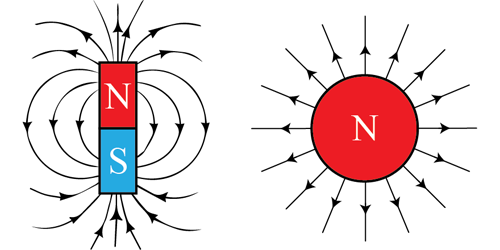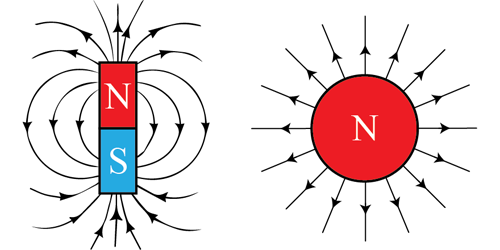Minimum Mass of Magnetic Monopoles
Chop a magnet in half and you’ll end up with two magnets, each with a north and a south pole—no matter how small the original magnet. But some theories of particle physics predict the existence of particles with a single magnetic pole. Researchers have seen analogs of such monopoles in condensed-matter systems, but they have yet to catch the actual particles and measure their mass. Oliver Gould and Arttu Rajantie from Imperial College London have now derived lower limits on the mass of these putative particles.
The duo considered two cases in which magnetic monopoles may be produced: heavy-ion collisions and neutron stars. For the first case, the researchers calculated the likelihood (or cross section) that a pair of magnetic monopoles with a certain magnetic charge and mass will be created in the collisions. They then derived a lower limit on the monopole mass by comparing the calculated cross section with an existing upper bound on the cross section obtained from an experiment at CERN. They found that monopoles with twice the theoretical minimum magnetic charge—the smallest charge to which the experiment was sensitive—should have a mass of more than about .
For the neutron star case, the team calculated how the presence of monopoles in the interior of a star would affect the rate at which the energy of the star’s magnetic field is dissipated. By plugging into this calculation an observational estimate of the maximum magnetic field of neutron stars, the researchers obtained a lower bound of on the mass of monopoles with twice the minimum magnetic charge. For such monopoles, the collision bound and the neutron star bound are higher than the existing limit, which was derived using cosmological data.
This research is published in Physical Review Letters.
–Ana Lopes
Ana Lopes is a Senior Editor of Physics.





